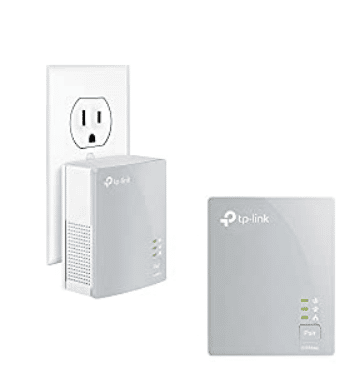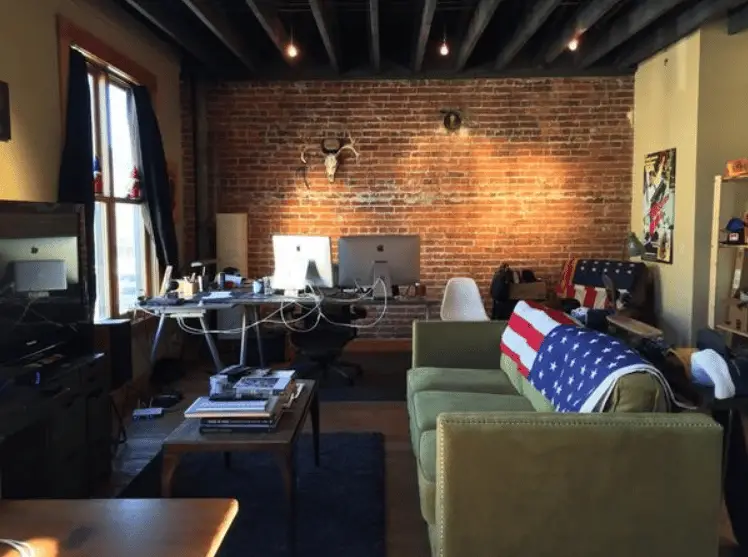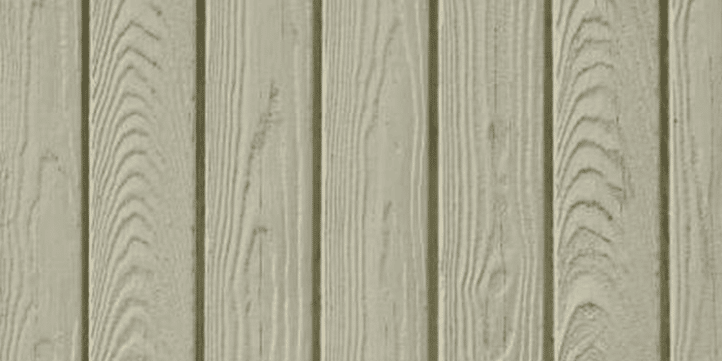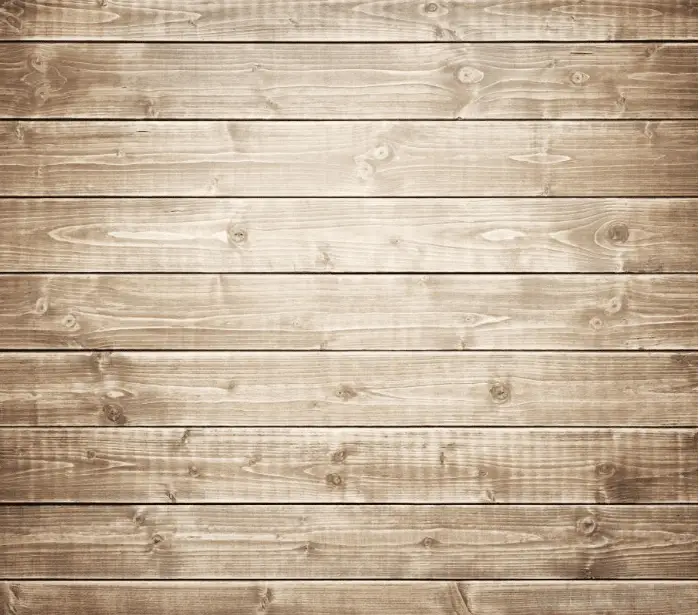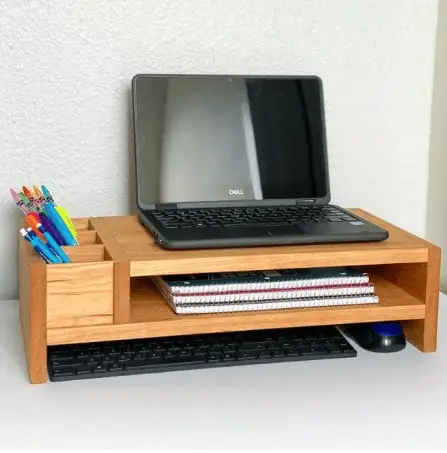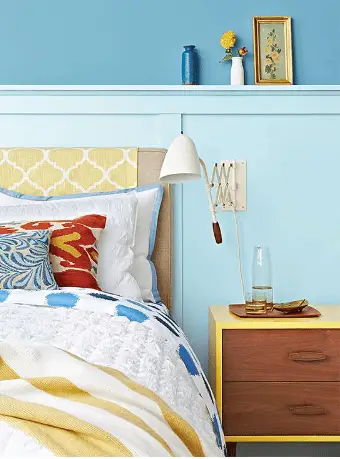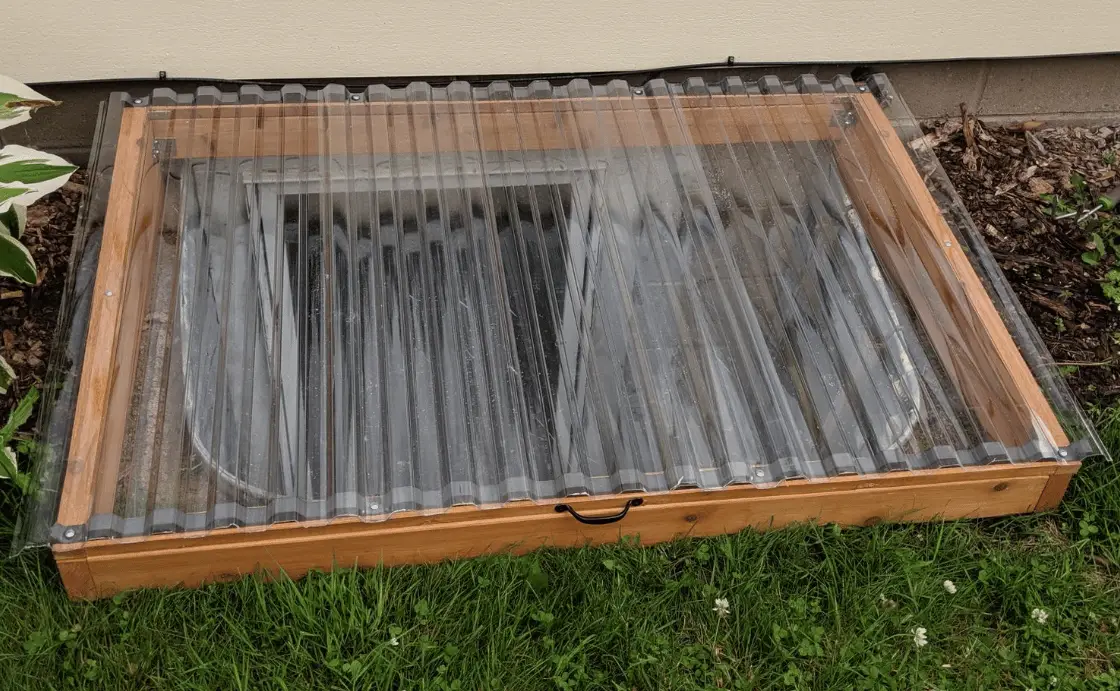It's time to set up your dream office. You need plenty of space and privacy, whether it's for home projects or working from home, and the basement is the perfect place to hole up and stay focused. That said, setting up a basement office can be...a challenge. Try some of these Basement Office Ideas to create the cozy and out-of-the-way space you need.
1) Wifi
One of the most important things you'll need when you're thinking about a home office is wifi, but it's hard to get wifi into a basement. They're usually surrounded on three or four sides by concrete, and the wifi just gets absorbed without making it to your computer. If you're running your home on wifi, you need to find a way to get that wifi into your basement office. Try some of these weak wifi solutions to give it a boost and get connected from your basement.
2) Industrial Style
If you have a finished basement, you've probably got a particular style in mind, or maybe a small list of styles that'd fit the current basement decor, but if it's unfinished, you've got to decide what decorations you want. The simplest way to decorate without having to finish walls and make huge alterations to your basement is to pick an industrial style since bare concrete walls already fit. Get furnishings like this industrial pipe lamp from Amazon, and place them on bare-bones or industrial style furniture.
3) DIY Light Up Art
Basements are typically dim and dull, and even if you've got a finished basement, you probably don't have a lot of windows for natural light. While overhead lights are ideal for maximum lighting, it's also healthy to have light from multiple directions, so think about making some decorations that light up. They'll also provide a small amount of light when you first come down the basement stairs so that you won't trip. To get started, you can check out this video on making a whale in a book light-up epoxy art piece.
4) DIY Industrial Desk Kit
If you don't have a finished basement, or if you have a minimalist or industrial theme in your finished basement, then you might want to continue with the industrial look. This way, you don't have to do a lot of redecorating and renovating when you fill in your office furniture. You can get an industrial desk kit like this that looks like it's made of pipes, and the great thing is that you can put it all together in the basement instead of carting a big piece of furniture downstairs.
5) Man Cave Office
Your office should be an enjoyable place to work since you're going to the trouble of designing and building the office yourself. You need to feel relaxed and be productive, but depending on what work you do, that could mean a lot of different things. If you want an all-in-one space for a hobby office, think about turning your basement into a man cave-office combination by adding a TV, dartboard, and more. You can even look at this article here to get more ideas on designing a man cave office.
6) Wood Look Vinyl Sheeting
If your basement is unfinished, one of the things you'll need to do is finish it, or at least the section you're using as an office. If you want to finish it in a way that doesn't cost a lot but still leaves it looking like an office, you probably want some sort of hardwood imitation. Vinyl sheeting is a common way to finish a concrete floor cheaply, and you can get vinyl sheets like these that look like wood.
7) DIY Paneling
Wood paneling is an easy way to finish the walls of your basement, and it's relatively cheap since the materials don't cost much, and you can do it yourself. The paneling will make the walls look somewhat like wood and make the room look more like an office. This will also help insulate the area so that your office can be comfortably warm, and you can paint over the paneling to create a color you like to match your theme.
8) DIY Stairway Lighting
If you're taking the time to design a home office, it probably means you'll be using it a lot, and you need to have a safe way to get downstairs each time you head down to work. Since basements tend to have steep concrete steps and poor lighting, you'll want to finish your steps to make them safe, and you can even add lights along each step using the instructions in this video by Andy Bird Builds. With lighting like this, you'll be able to see each step, making them safer and making you more likely to use the office.
9) DIY Wood
Wood is one of the highest quality materials people use in homes, and it can create a beautiful look and feel for your office. You can even get cedar or other woods with a strong scent and build a paradise with an incredible aroma. There are some problems with wood in basements, though, so you'll have to take precautions and make sure you do it right. Check out this article by Dan Cavallari from Wisegeek to learn more about the pros, cons, and precautions to decide if wood is the right choice for you.
10) Brick Tapestry
If you don't want to refinish the entire basement just to put in a home office, we understand. There are ways to make it look nice and give it a comfortable atmosphere without breaking the bank or spending a ton of time. You can get a brick tapestry like this for an unfinished basement to make it look more like a finished room instead of a bare concrete space. Then, get throw rugs and other things to warm up the area and make it more comfortable. This is also a great way to cover up drywall holes or water damage.
11) Laptop Stand
While the arrangement of big furniture pieces is important, you'll also want to spend some time planning the little things. One big consideration that will affect your furniture arrangement and almost everything in your office is the location of the computer. If you have a laptop, you need a comfortable desk space, and you might not want to lug a huge TV desk downstairs. Instead, try using these directions from The Handyman's daughter to build a laptop stand and organizer that you can customize for your needs.
12) DIY Lightbox
Light is often an issue in basements since they usually only have small windows near the top of the walls, and little light is able to filter through. You might want to arrange some of your decorations to get additional light into your room so that you can see when you first come downstairs if your light switch or pull-cord is in an inconvenient spot. These also give you a few different sources of light, which can help people concentrate better than just having overhead lights. You can use this video to learn to make a lightbox.
13) Board and Batten
If your basement isn't finished yet, you're probably looking at options for covering the walls and the floor to make the area feel more like an office. One great choice for a wall is board and batten. It's an attractive and decorative way to design a wall, and it looks more professional and officelike than, say, a flowery wallpaper. It's also a fairly easy task to do on your own, and you can use this article to learn how.
14) Floor Lamp
Basements are known for having terrible lighting since they typically don't have windows or only have tiny windows at the top of the walls. If your basement is unfinished, you might only have a couple of industrial lights for lighting, too. If you don't want to rewire the area to install new lights, you can get a floor lamp like this that you can put anywhere to create the lighting conditions you need by just plugging it in.
15) Minifridge
You want your home office to be comfortable enough to work in, and since it's away from the rest of the house, you might not want to have to go up and down the stairs all the time. One way to stay energized and focused is to have a mini fridge like this right in your basement office. This way, you can get drinks when you need them and don't have to subject yourself to the distractions of the rest of the house every hour or two.
16) DIY Light Switch
A lot of basements have pull-cord lights, which is fine for a basement workshop, but inconvenient for an office you'll use every day. It's much more enjoyable to go downstairs and flip a switch than it is to stumble blindly into the room, accidentally kick your desk chair, and finally find the pull-cord. You can rewire your basement so that your lights are on a switch using the information in this video by This Old House.
17) Kits
Kits are your friends when you're building a basement or attic space. With a kit, you can build the furniture downstairs in the basement or up in the attic without having to carry the finished piece of furniture up or down steep or narrow, or poorly lit stairs. Try to find kits for all your big furniture, and maybe modify them to fit your office. For example, you can get a shelving kit like this and maybe put some wood boards down on the wire shelves so you can place smaller items on it without worrying that they'll fall through.
18) Safety
Safety is a huge factor when you're converting a basement to a living space like an office for the first time. One of the most common code requirements for that kind of conversion is an egress window. This means that you need a way to get out if there's a fire and you're trapped in the basement. While that sounds impossible if you only have small windows, you can actually install a window well using these directions from doityourself.com so that you'll have a place to escape if needed.
19) Air Purifier
When you walk down into your basement, can you take a breath of fresh, clean air, or does it smell kind of musty? If it smells musty, are you really ready to build an office in that? You can still build an office in a basement with musty air, but you'll want to get an air purifier like this to make the air feel and smell better so that you're more comfortable down there. This way, you can concentrate and not worry about your air quality.
20) DIY Window Well Cover
If you're converting your basement to a livable space for the first time, you'll probably need a window well so you can make your windows larger. This way, you'll meet building codes, and you'll have a safe way to get out if there's a fire while you're down in your office. This will also bring in more light, but dirt has a habit of falling into window wells and making them look dirty. Instead of climbing down into them to clean them, build them with a cover using these instructions so that you can clean the cover easily.
21) Epoxy Flakes
You're turning your basement or a section of it into an office, but that doesn't mean it'll be an office forever. Instead of building a pretty office space that won't be durable enough for most basement applications, think about making a space that's comfortable for an office but durable enough for other uses later on. One great option for spaces like these is epoxy since it's durable, and you can use epoxy flakes like this to make it look pretty, too.
What do you envision for your basement office? Did any of these ideas inspire you to build the perfect basement home office? Please tell us all about it in the comments below!

